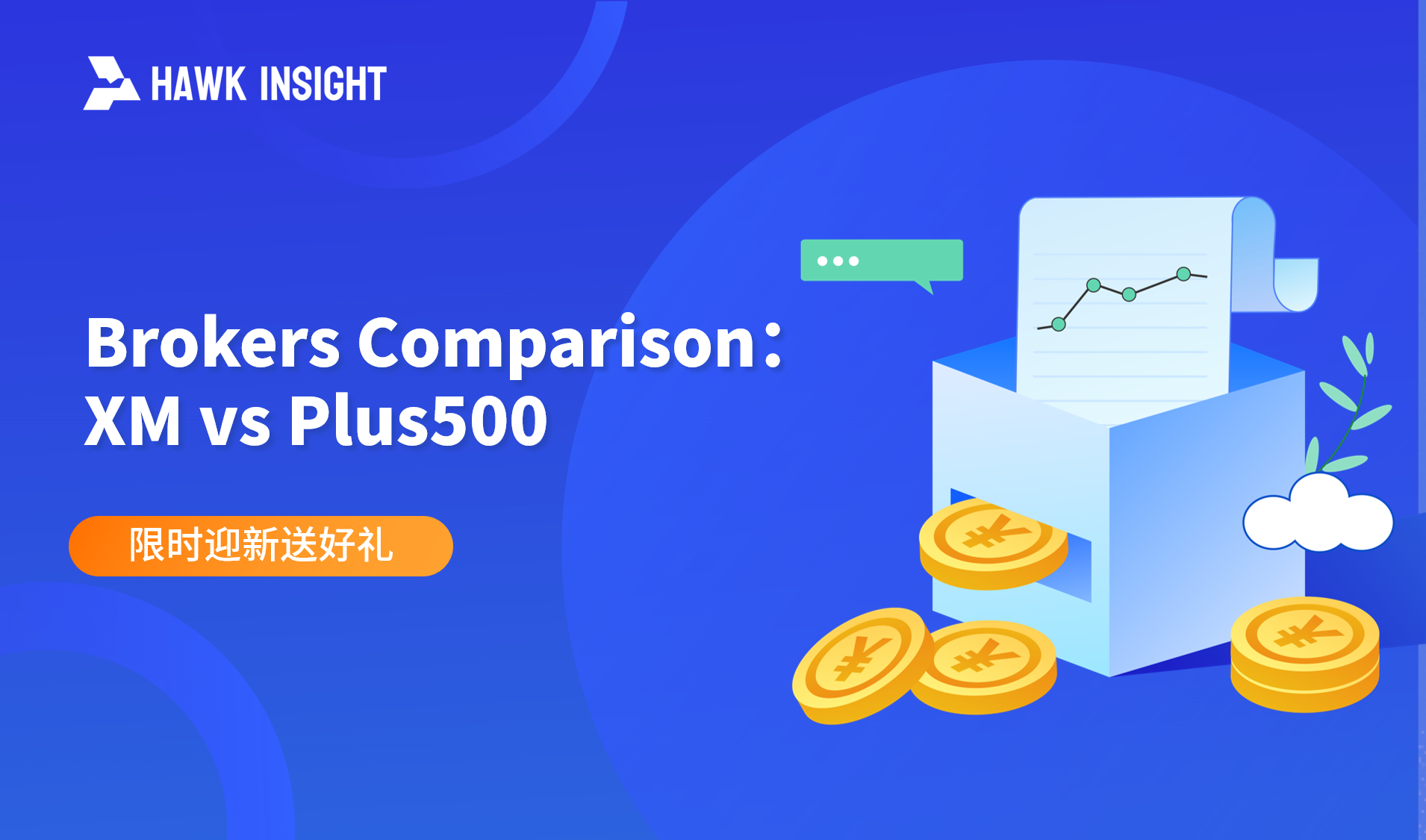Brokers Comparison: XM vs Plus500
This article will provide a detailed comparison between the Plus500 and XM from multiple aspects to help investors make choices based on their own needs.

When looking for regulated and reliable online trading platforms, Plus500 and XM are two high-profile names.This article will compare the two platforms in detail from multiple aspects such as platform history, trading tools, account types, fee structure, regulatory security and customer support to help investors make choices based on their own needs.
Plus500 Overview
Established in 2008, the Plus500 is headquartered in Israel and is strictly regulated by the Cyprus Securities and Exchange Commission (CySEC), the UK Financial Conduct Authority (FCA) and the Australia Securities and Investments Commission (ASIC).As a trading platform dominated by contracts for difference (CFD), the Plus500 provides investors with trading opportunities in a variety of markets such as foreign exchange, commodities, indices and cryptocurrencies.The platform has won widespread recognition for its simple interface and convenient operating system, and has also won many industry awards for its innovative features and competitive prices.
In addition, since its listing on the London Stock Exchange in 2013, the Plus500 has achieved a net profit of US$354.5 million in 2020 thanks to its stable financial performance and strong market share.At the same time, the platform launched the Plus500Invest, which provides investors with stock trading services covering more than 2,700 financial instruments.
XM Overview
Founded in 2009 and headquartered in Cyprus, XM now has more than 3.5 million registered users from 196 countries.XM offers trading tools including foreign exchange, stocks, commodities and cryptocurrencies, and is known for its highly competitive floating spreads (as low as 0 points).Similar to the Plus500, XM is also subject to multiple regulations by CySEC, FCA and ASIC. Its good customer support and rich educational resources make it an ideal choice for novice investors.
With its wide range of trading tools and excellent customer education content, including webinars, video tutorials and market analysis, XM has won the trust of investors around the world, especially among entry-level traders.
Trading Platforms
When choosing a trading platform, the flexibility of trading tools and platforms is a key factor.Both the Plus500 and XM offer mobile trading applications and support iOS and Android systems.However, the Plus500 's mobile application is more advantageous in terms of flexibility and convenience.
In terms of trading tools, the Plus500 mainly focuses on trading CFDs, covering stocks, indices, commodities and currency pairs, while XM offers a wider range of foreign exchange, stocks, indices, metals and energy instruments.Both offer demo accounts, but the Plus500 demo accounts have no time limit, while XM demo accounts are valid for only 30 days.
Leverage ratio is also one of the obvious differences between the two.The Plus500 offers retail traders a maximum leverage of 1:30, while XM offers up to 1:888.Therefore, investors should fully consider their own risk tolerance when selecting a platform.
Markets & Tools
Both the Plus500 and XM provide investors with a wealth of trading tools.The Plus500 has more than 2,000 investment products, covering forex, indices, commodities, cryptocurrencies, stocks and options, while XM offers more than 1,000 financial instruments, including forex, indices, precious metals, commodities, energy and stocks.
In terms of market coverage, the Plus500 provides investors with opportunities to enter global markets, including markets in Asia, Europe and North America, especially emerging markets such as China.XM covers markets including Asia, Europe, Africa and the Middle East, and offers more foreign exchange trading pairs, including some rare currency pairs not available in the Plus500.
Account Types & Fees
There are significant differences between the Plus500 and XM in terms of account types and fee structures.The Plus500 offers only one account type, while XM offers three account options: Micro Account, Standard Account, and XM Zero Account.XM's micro and standard accounts do not charge commissions but have large spreads, while XM Zero accounts offer tighter spreads but charge a certain commission.
In terms of fees, the Plus500 spreads are fixed and no additional commissions are charged.In addition, both provide demo accounts that allow users to conduct policy testing without taking financial risks.
Regulatory
When selecting a trading platform, supervision and security are essential considerations.Both the Plus500 and XM are regulated by the world's top financial regulators, such as the UK's FCA and Australia's ASIC.Both use SSL encryption technology to ensure the security of users 'personal and financial information.
The Plus500 protects customer funds by sequestering accounts, ensuring that funds are separated from the company's operating funds.XM provides negative balance protection to ensure that customers 'losses do not exceed their account balance, which is a favorable security measure for high-risk traders.
In addition, the minimum opening amount for the Plus500 is US$100, while the minimum opening amount for XM is only US$5, which is more attractive to small-money traders.
Customer Support & Education Resources
Both the Plus500 and XM provide customers with a wide range of educational resources and support services, including video tutorials, e-books and customer service hotlines.The Plus500 provides 24/7 multilingual support, while XM's services are available during market opening hours.In terms of education, the Plus500 focuses on trading operations, while XM covers various trading knowledge from entry to advanced.
Both provide demo accounts for novice traders to help them gain experience through trading simulations of virtual funds.XM also offers loyalty programs to further reward long-term traders.
·Original
Disclaimer: The views in this article are from the original Creator and do not represent the views or position of Hawk Insight. The content of the article is for reference, communication and learning only, and does not constitute investment advice. If it involves copyright issues, please contact us for deletion.